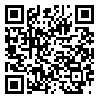دوره 13، شماره 3 - ( 2-1401 )
جلد 13 شماره 3 صفحات 356-349 |
برگشت به فهرست نسخه ها
Download citation:
BibTeX | RIS | EndNote | Medlars | ProCite | Reference Manager | RefWorks
Send citation to:



BibTeX | RIS | EndNote | Medlars | ProCite | Reference Manager | RefWorks
Send citation to:
Rezvanian S, Saraei M, Mohajeri H, Hassani-Abharian P. The Effect of Different Transcranial Direct Current Stimulation (tDCS) Protocols on Drug Craving and Cognitive Functions in Methamphetamine Addicts. BCN 2022; 13 (3) :349-356
URL: http://bcn.iums.ac.ir/article-1-1554-fa.html
URL: http://bcn.iums.ac.ir/article-1-1554-fa.html
The Effect of Different Transcranial Direct Current Stimulation (tDCS) Protocols on Drug Craving and Cognitive Functions in Methamphetamine Addicts. مجله علوم اعصاب پایه و بالینی. 1401; 13 (3) :349-356
چکیده:
Introduction: Drug craving is a major problem in addiction treatment. Neuroimaging research has revealed various areas for drug craving, among which two key areas are the Dorsolateral Prefrontal Cortex (DLPFC) and the cerebellum. The DLPFC is involved in different cognitive tasks, such as inhibitory control over seductive options that promise an immediate reward. The cerebellum is related to cognition and memory and activated by drug-related cues. Therefore, we decided to study the effect of Transcranial Direct Current Stimulation (tDCS) on six different protocols in reducing drug craving and increasing cognitive functions in methamphetamine addicts.
Methods: The present study is quasi-experimental, with a pre-test-post-test design and a control group. Based on a simple sampling method, 15 male methamphetamine addicts were recruited from two rehabilitation centers in Tehran City, Iran. The participants were aged 18-65 years with a minimum of 12-month history of methamphetamine dependence. The Visual Analog Scale (VAS), the go/no-go task and the n-back task were administered before and after a single session of tDCS. The tDCS was applied on six protocols: 1) the right DLPFC anodal and the left DLPFC cathodal stimulation, 2) the right DLPFC cathodal and the left DLPFC anodal stimulation, 3) the right DLPFC anodal and the right arm cathodal stimulation, 4) the left DLPFC anodal and the left arm cathodal stimulation, 5) the right cerebellar hemisphere (O2) anodal and the left cerebellar hemisphere (O1) cathodal stimulation, and 6) the right cerebellar hemisphere (O2) cathodal and the left cerebellar hemisphere (O1) anodal stimulation. The data were analyzed by covariance method using SPSS software v. 22.
Results: Study results indicated that while single-session tDCS effects on craving were not significant, it increased cognitive inhibition, especially in protocol 2: the right DLPFC cathodal and the left DLPFC anodal stimulation.
Conclusion: Single-session tDCS affects craving insignificantly, but it can increase cognitive inhibition significantly. These findings support the results of previous studies on the effects of brain stimulation on reducing drug craving in other drug-type settings.
Methods: The present study is quasi-experimental, with a pre-test-post-test design and a control group. Based on a simple sampling method, 15 male methamphetamine addicts were recruited from two rehabilitation centers in Tehran City, Iran. The participants were aged 18-65 years with a minimum of 12-month history of methamphetamine dependence. The Visual Analog Scale (VAS), the go/no-go task and the n-back task were administered before and after a single session of tDCS. The tDCS was applied on six protocols: 1) the right DLPFC anodal and the left DLPFC cathodal stimulation, 2) the right DLPFC cathodal and the left DLPFC anodal stimulation, 3) the right DLPFC anodal and the right arm cathodal stimulation, 4) the left DLPFC anodal and the left arm cathodal stimulation, 5) the right cerebellar hemisphere (O2) anodal and the left cerebellar hemisphere (O1) cathodal stimulation, and 6) the right cerebellar hemisphere (O2) cathodal and the left cerebellar hemisphere (O1) anodal stimulation. The data were analyzed by covariance method using SPSS software v. 22.
Results: Study results indicated that while single-session tDCS effects on craving were not significant, it increased cognitive inhibition, especially in protocol 2: the right DLPFC cathodal and the left DLPFC anodal stimulation.
Conclusion: Single-session tDCS affects craving insignificantly, but it can increase cognitive inhibition significantly. These findings support the results of previous studies on the effects of brain stimulation on reducing drug craving in other drug-type settings.
نوع مطالعه: Original |
موضوع مقاله:
Behavioral Neuroscience
دریافت: 1398/4/20 | پذیرش: 1399/8/3 | انتشار: 1401/2/11
دریافت: 1398/4/20 | پذیرش: 1399/8/3 | انتشار: 1401/2/11
| بازنشر اطلاعات | |
 |
این مقاله تحت شرایط Creative Commons Attribution-NonCommercial 4.0 International License قابل بازنشر است. |





